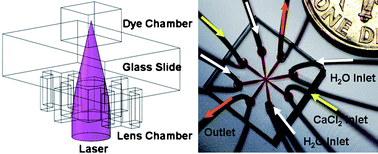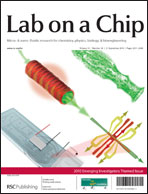We report a two-dimensional (2D) tunable liquid gradient refractive index (L-GRIN) lens for variable focusing of light in the out-of-plane direction. This lens focuses a light beam through a liquid medium with a 2D hyperbolic secant (HS) refractive index gradient. The refractive index gradient is established in a microfluidic chamber through the diffusion between two fluids with different refractive indices, i.e. CaCl2 solution and deionized (DI) water. The 2D HS refractive index profile and subsequently the focal length of the L-GRIN lens can be tuned by changing the ratio of the flow rates of the CaCl2 solution and DI water. The focusing effect is experimentally characterized through side-view and top-view image analysis, and the experimental data match well with the results from ray-tracing optical simulations. Advantages of the 2D L-GRIN lens include simple device fabrication procedure, low fluid consumption rate, convenient lens-tuning mechanism, and compatibility with existing microfluidic devices. We expect that with further optimizations, this 2D L-GRIN lens can be used in many optics-based lab-on-a-chip applications.

You have access to this article
 Please wait while we load your content...
Something went wrong. Try again?
Please wait while we load your content...
Something went wrong. Try again?


 Please wait while we load your content...
Please wait while we load your content...